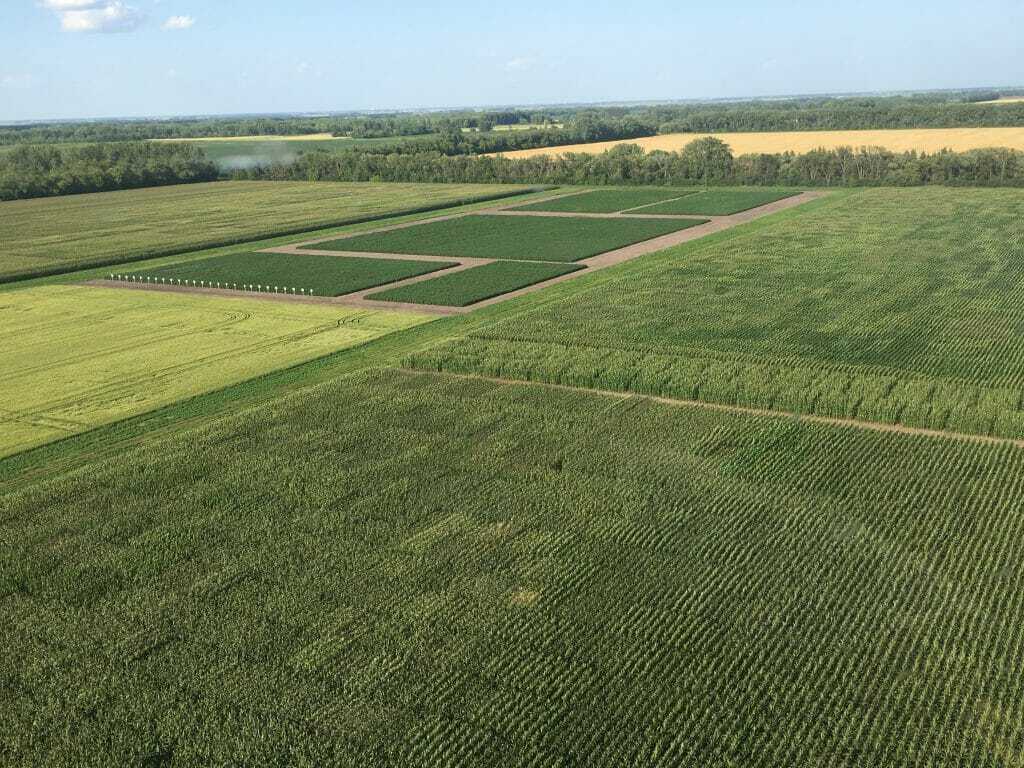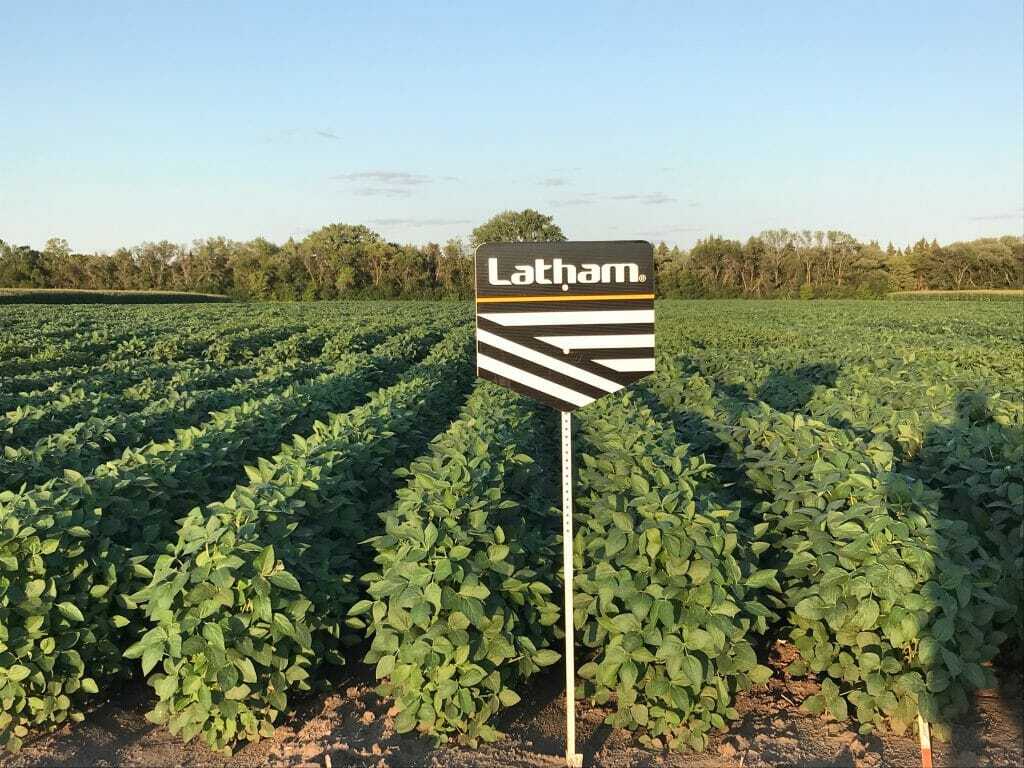It’s another milestone year for Jared Hagert and his family as his great grandfather homesteaded their farm in 1909. The family hosted a party in 2009 for the community, complete with a live band and picnic, to celebrate their Century Farm.
Their family legacy dates to 1890 when 16-year-old Gust (Gus) E. Hagert immigrated from Sweden to the United States. He moved in 1905 to Section 10 in Pleasant View Township, Emerado, ND. Gus worked on his uncle Oscar Hagert’s farm with a “rent to own” arrangement. After farming for 40 years, Gus passed the family farm down to his son Curtis.
“Curtis Senior, my grandfather, was committed to improving yield. I have a Durum Wheat sample he submitted to the 1937 International Hay and Grain Expo in Chicago that took 5th place in the World,” says Jared Hagert, who feels blessed to be the fourth generation to live on the original farmstead. “I took that germ sample more than once to Show and Tell. In fact, it’s still on display in my home office.”
Jared’s father, Curtis Junior, started farming in the mid-60s. His brother, David, came home in the mid-1970s. The two brothers farmed together for about 25 years, and then David decided to focus on growing his Agri Data business.
Using new technology to continually improve their farm is a common philosophy and interest of the Hagert family. Jared’s parents, Curtis Junior and Roberta, started a seed conditioning business in 1993.
“Dad converted a three-stanchion milk parlor, granary and cattle shed into our first seed conditioning facility. Dad raised it eight feet and installed conditioning equipment. Wheat scab struck in 1993, and Hagert Seed was one of the only entities with a gravity table that took out the scab. It paid for farmers to condition their wheat, so they could sell it at a higher price.
Innovation continued to build the business. After farming for more than 40 years and conditioning seed for more than 12 years, Curtis Junior sold Hagert Farms and Hagert Seed to Jared and his wife, Brandie. Jared, who graduated from North Dakota State University (NDSU) with a degree in Ag Systems Management also known as Ag Mech, had a vision to build Hagert Seed. With help from Curtis Junior and others, Integrated Ag Services took shape with a new warehouse, seed plant, navy bean receiving station and office.
“Our mission is to be ‘more than your local seed supplier.’ I wanted our business to provide seed with quality genetics, proven performance, and dependable service,” says Jared.
Integrated Ag Services’ conditioning facility was fully operational in January 2016. Integrated Ag began conditioning and distributing seed throughout the Midwest. This new facility is equipped with a full line of precision conditioning equipment and handles both bulk and package seed.
Although the operation has grown, it is still very much family operated. Jared’s cousin Leslie and her husband, Jon, moved home in 2013. Leslie serves as office manager for Integrated Ag. Jared and Jon farm together. They raise spring wheat, white wheat, edible beans, soybeans and corn.
“A few years ago we started planting more cover crops. Cover crops especially help reduce erosion on edible beans acres since many of those plants are out of the soil and run the whole plant through a specialty combine. We’re doing more no-till, and that has been working well.”
Seed technology has allowed them to farm acres that before couldn’t produce a crop.
“We have some dryland acres that have an especially dry, sandy profile. Normally I’d be getting a max of 40 to 50 bushels per acre on corn. With drought-tolerant hybrids, we’re getting 90 bushels per acre. New herbicide technologies also are helping increase yields. We’re looking forward to Enlist E3 soybeans.”
Jon and Leslie are instrumental in keeping the operation running when Jared travels on behalf of the United Soybean Board or attends other industry meetings. Jared served as USB chair during its 25th anniversary year and remains on the board.
“When I first got appointed to the United Soybean Board, I was filling a seat vacated by Doug Goering who resigned to become ag commissioner,” says Jared. “I stepped into big shoes and had an accelerated learning curve. But I’m grateful for the opportunity because it really allowed me to step up.”
Jared served as the vice chair of the World Initiative for Soy and Human Health through the American Soybean Association. He also has been involved with North Dakota Soybean Council and North Dakota Soybean Growers Association. He has served the ND Soybeans Growers for one term as vice president and two terms as president.
“My dad had was a founding member of North Dakota Soybean Growers Association and was active on soybean council. Watching him serve for the greater good left an indelible impression,” says Jared.
Keeping with tradition, Jared and Brandie started making lefse like his mother and grandmother have done for years. Today the Hagert family is sharing this treasured recipe with us.
Lefse
Ingredients
- 4 lbs. Russet Potatoes (10-to-12 med. potatoes)
- 1/2 Cup Butter
- 1/2 Cup Heavy Cream
- 1 T Salt
- 1 T Sugar
- 5 Cups Flour
Directions
- Peel and cut potatoes into a uniform size. Boil until fork tender. Do not overcook. Drain and let sit to reduce excess moisture. Fill a ricer two-thirds full of warm potatoes, and rice them into a large mixing bowl. Continue until you have 8 cups. Add butter, cream, salt, and sugar. Mix well. Let stand to cool, then cover and refrigerate.
- While the dough is chilling, flour the pastry cloth and slip the corrugated rolling pin into a rolling pin cover. Have plenty of flour on hand to re-flour the board and rolling pin before rolling each lefse round. Once the dough is chilled, add the flout and thoroughly knead with your hands. Return the dough to the refrigerator to chill.
- Preheat grill to 500 degree. Separate half of the dough and leave the remainder in the refrigerator. With floured hands, make a ball of dough the size of a small tennis ball. Pat it flat. Flour rolling pin and roll dough into a large thin circle. Using a lefse stick, transfer lefse to grill. Bubbles will form on top in about one minute. Flip and cook 30 – 45 seconds. Place each sheet of lefse cozies to cool and stay moist. To store, wrap lefse tightly in plastic wrap and eat within a few days. To freeze, fold each piece in half twice. Wrap each bundle of 3 – 4 lefse rounds in plastic wrap and place in freeze storage bags.
Recipe Notes
This is our go-to recipe when we fire up our lefse grill. A how to video can be found at https://homeoflefse.com/




